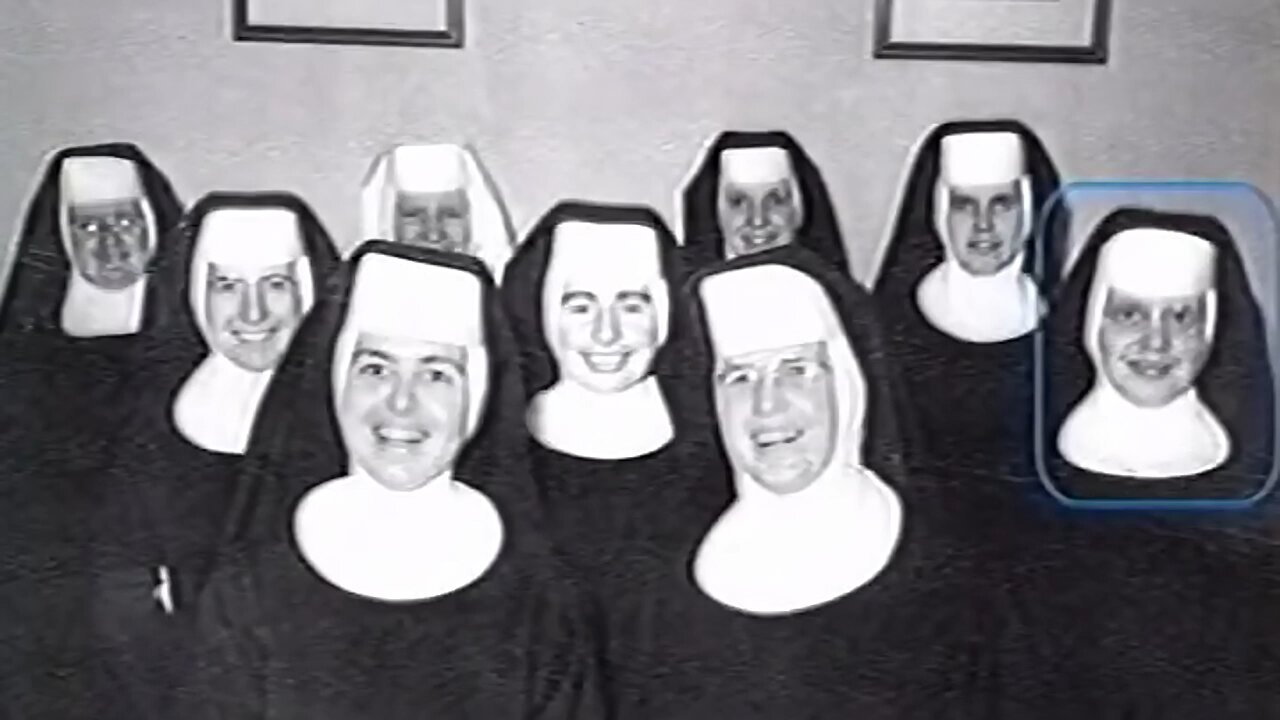Premium Only Content

FORMER ROMAN CATHOLIC "BRIDE OF CHRIST" NUN TESTIFIES OF ABNORMAL LIFE IN THE CONVENT
This presentation features Richard Bennett, a former Roman Catholic Dominican priest for 22 years & a Roman Catholic for 48 years interviewing former Benedictine nun Mary Ann Pakiz who, according to Roman Catholic theology, was a "Bride of Christ" following the "Rule of Saint Benedict" (The Rule of Saint Benedict (Regula Benedicti) is a book of precepts written by St. Benedict of Nursia for monks living communally under the authority of an abbot. Since about the 7th century it has also been adopted by communities of women. During the 1500 years of its existence, it has become the leading guide in Western Christianity for monastic living in community. The spirit of St Benedict's Rule is summed up in the motto of the Benedictine Confederation: pax ("peace") and the traditional ora et labora ("pray and work").).
The Benedictine Sisters of Perpetual Adoration are a congregation of nuns within the Benedictine Confederation. The original monastery was founded in 1874 by a group of five nuns, led by Sister Mary Anselma Felber, O.S.B., who came from the young monastery of Maria-Rickenbach (founded 1857) in Switzerland. Arriving in Clyde, Missouri, they founded the Benedictine Convent of Perpetual Adoration. This remains the motherhouse and largest community of the congregation. It houses 550 documented relics of the saints—the biggest such collection in the United States. The decision to come was sparked by the departure of a group of monks from the nearby Engelberg Abbey, at a time when monastic communities felt threatened by political changes taking place throughout Europe. As with many other monastic groups, they looked to the New World for a place of refuge.The monks went on to found Conception Abbey in nearby Conception, Missouri, and began to minister to German and Irish immigrants of the region. The nuns follow a simple, contemplative way of life, formed by the Rule of St. Benedict. To this end, they supported themselves by such farming as could be done on their land. They also provide the printing of spiritual cards, as well as making vestments for churches around the country, and the baking of Altar Breads. To the usual monastic routine, they have added the practice of Perpetual Adoration in their chapels.
Roman Catholic nuns, similar in tradition to ancient Rome's "vestal virgins" (the Vestals or Vestal Virgins (Vestales, singular Vestalis), were priestesses of Vesta, goddess of the hearth. The Vestals were freed of the usual social obligations to marry and bear children, and took a vow of chastity in order to devote themselves to the study and correct observance of state rituals) or Buddhist nuns, think their ascetic lifestyle will earn them eternal salvation. Even Mother Teresa felt the emptiness of this type of "works to earn salvation" writing, "How cold—how empty—how painful is my heart.—Holy communion—Holy Mass—all the holy things of spiritual life—of the life of Christ in me—are all so empty—so cold—so un-wanted. The physical situation of my poor, left in the streets unwanted, unloved, un-claimed—are the true picture of my own spiritual life, of my love for Jesus...." (Letter to Fr. Neuner, May 12, 1962, Mother Teresa, p. 232).
True Christian believers have the "Spirit of truth" (John 14:17) and through that Spirit, a vital bond of union with Jesus Christ. If anyone has Christ as Savior, he or she has the Holy Spirit as Indweller (1 Corinthians 6:19-20). Anyone who claims to belong to Jesus Christ but gives no evidence of being indwelt by the Holy Spirit lacks the indisputable proof to establish his or her claim. No test could be more easily applied and none is more decisive, as Scripture explains; "now if any man have not the Spirit of Christ, he is none of His" (Romans 8:9). The consolation of the Holy Spirit is so basic to Christian life that the Apostle Paul calls it "everlasting consolation;" (2 Thess 2:16). Eternal redemption, and the everlasting life is found in the Gospel of grace (Ephesians 2:8-10). Thus living in a monastery or convent is unnecessary & using relics, praying to Mary, or following ascetic rules & rituals believing it will lead to salvation is worthless (Galatians 1:6-9).
-
 24:27
24:27
Christian Answers
2 years agoDeaths From Vaccine Damaged Hearts, Entertainers & Athletes Drop Dead, Myocarditis
457 -
 LIVE
LIVE
The White House
1 hour agoPress Secretary Karoline Leavitt Briefs Members of the Media, July 23, 2025
1,167 watching -
 LIVE
LIVE
RalliedLIVE
51 minutes ago10 WINS WITH THE SHOTTY BOYS
80 watching -
 1:05:24
1:05:24
Timcast
1 hour agoTulsi Drops PROOF Obama Ordered COUP Against Trump, Obama FURIOUS
130K70 -
 2:11:26
2:11:26
Steven Crowder
4 hours ago🔴BREAKING: Tulsi Drops Major Receipts Proving Obama Treason over Trump Russia Hoax
381K274 -
 1:27:20
1:27:20
Nikko Ortiz
2 hours agoLive - Most Painful Clips
20.6K -
 LIVE
LIVE
Barry Cunningham
13 hours agoDON'T MISS TODAY'S WHITE HOUSE PRESS CONFERENCE WITH KAROLINE LEAVITT (AND MORE NEWS)
2,408 watching -
 LIVE
LIVE
IrishBreakdown
1 hour agoBig Ten/ACC Going After The SEC - Notre Dame Buy/Sell/Hold
30 watching -
 DVR
DVR
Neil McCoy-Ward
1 hour ago🔥 JUST ANNOUNCED! It's About To Get REAL Between the US & EU! 🇺🇸🇪🇺
7.32K2 -
 1:35:39
1:35:39
The Mel K Show
2 hours agoMORNINGS WITH MEL K - Seditious Conspiracy to Defraud the PEOPLE of the United States of America 7-23-25
20.4K6